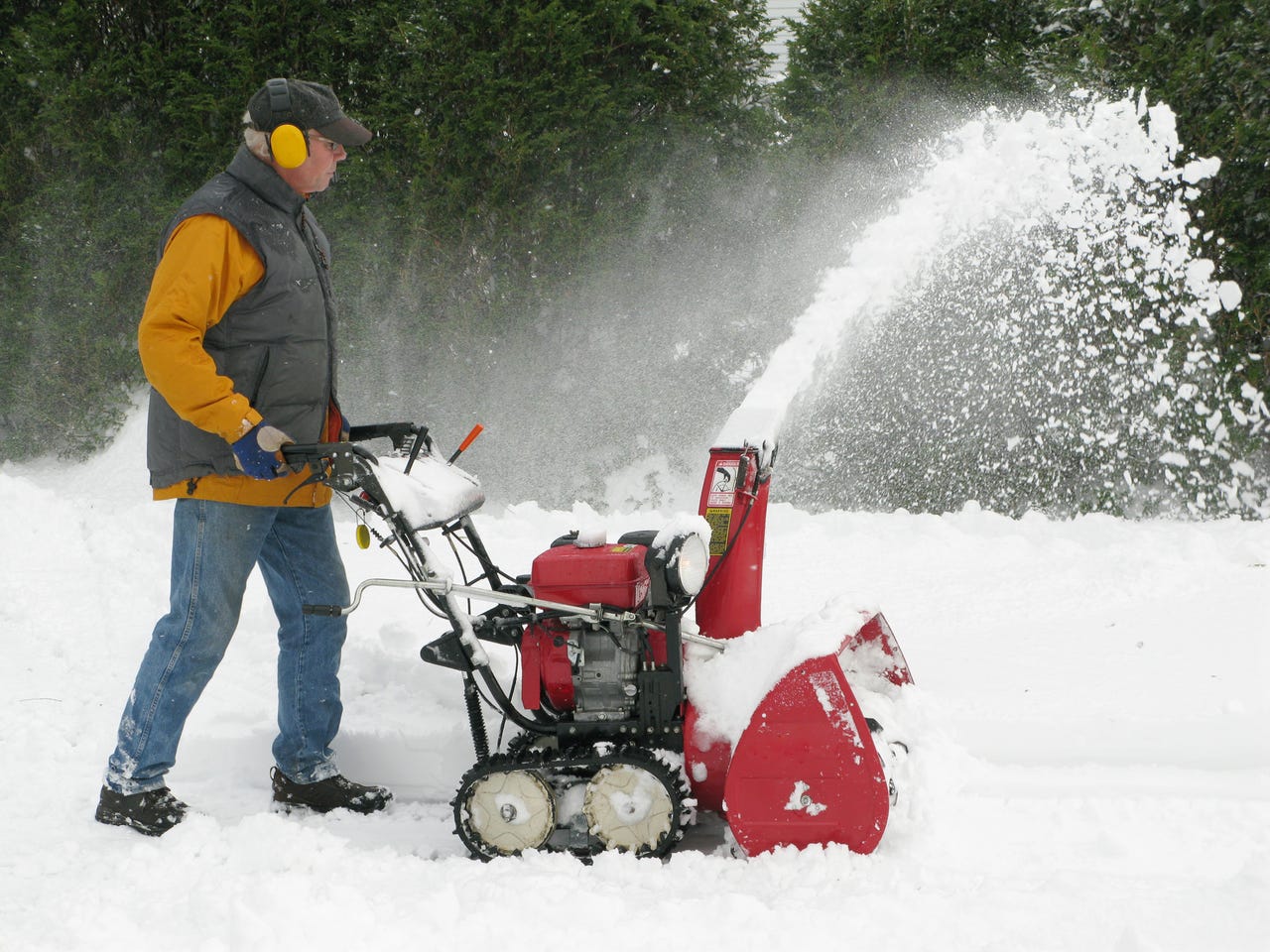'ZDNET Recommends': What exactly does it mean?
ZDNET's recommendations are based on many hours of testing, research, and comparison shopping. We gather data from the best available sources, including vendor and retailer listings as well as other relevant and independent reviews sites. And we pore over customer reviews to find out what matters to real people who already own and use the products and services we’re assessing.
When you click through from our site to a retailer and buy a product or service, we may earn affiliate commissions. This helps support our work, but does not affect what we cover or how, and it does not affect the price you pay. Neither ZDNET nor the author are compensated for these independent reviews. Indeed, we follow strict guidelines that ensure our editorial content is never influenced by advertisers.
ZDNET's editorial team writes on behalf of you, our reader. Our goal is to deliver the most accurate information and the most knowledgeable advice possible in order to help you make smarter buying decisions on tech gear and a wide array of products and services. Our editors thoroughly review and fact-check every article to ensure that our content meets the highest standards. If we have made an error or published misleading information, we will correct or clarify the article. If you see inaccuracies in our content, please report the mistake via this form.
How to choose a snow blower: Ultimate buying guide for the winter days ahead


For a few years after I graduated college, I worked at MTD Products, which is a manufacturing company that assembles powered lawn equipment, such as snow blowers, lawn mowers, and string trimmers.
Having built, torn apart, and refurbished countless snow blowers, I have become familiar with how they work.
Also: The best snow blowers: It's time to ditch the shovel
To help you make the most informed buying decision, I'm going to break down all the major differences between snow blowers. That way, you won't spend a fortune on a machine that isn't right for you.
Model types
There are four main types of snow blower: single stage, two stage, three stage, and powered shovel. The stage refers to how many augers a model has -- the more augers, the more powerful a model. A powered shovel is exactly what it sounds like: a snow shovel with a power source that looks like a hybrid of shovel and blower. Each model type has its pros and cons.
Single stage
A single-stage snow blower is one of the smallest models available. It's called "single stage" because it only uses one auger to sort scoop and throw snow. They're the weakest type of blower, meant for short driveways or areas that get a few inches of snow. Their compact design makes them easy to store.
Two stage
A two-stage machine uses two types of augers to deal with snow -- a main auger to break up and gather, and a secondary screw as the machine throws snow to the side. These blowers are the most popular choice, as they can handle almost any length of driveway as well as deep or heavy snow. They're also relatively affordable, with 24-inch models often costing under $1,000.
Three stage
Three-stage snow blowers are beasts. They use three augers to break up heavy snow, and even ice accumulation, and blast it out of the chute. Some three-stage models, like those from Cub Cadet, are capable of throwing snow 50 feet to the side and 20 feet in the air.
Powered shovels
These are very small -- about 12-inches wide -- handheld snow blowers. These powered shovels are great to have around for clearing stoops and communal walkways. Plus, they're compact, so they're easy to store in the off-season. The Greenworks 80V and the Ryobi 40V shovels are great options.
Tub size
Most brands make 24, 26, 28, and 30-inch tub sizes. Although it is possible to find larger models, these tubs are meant for commercial use or -- like the John Deer 100 Series and Husqvarna electric lift series -- are designed as attachments for riding lawnmowers.
Also: The best extreme weather tech: Top gear for power outages
Mower-attachment models have advantages -- they don't have an engine to maintain, and they can clear heavy snow quickly. However, they can be a pain to set up, since you have to manually remove the blade deck from your riding mower and attach a series of belts to the drive pulleys.
Generally, it doesn't matter how wide your tub is as the power of a blower lies in its augers. A 24- or 26-inch model, like the Troy-Bilt Storm 2420, is as wide as most people need.
Gas vs battery
Most snow blowers are gasoline-powered, which means you'll have an engine to maintain, including regular oil changes, fuel treatments, spark plug cleanings, and more. Newer gas-powered snow blowers also feature push-button or electric starts, which is an improvement on rip cords. Gasoline is also a more reliable fuel source, since you don't have to worry about cold weather draining batteries.
The obvious advantage of battery-powered snow blowers, like the DeWalt 60V Max, is they run cleaner and you don't have to worry about storing gasoline. There isn't much difference in power, since battery-operated equipment has made huge strides forward. If your city has restrictions on emissions, a battery-powered model is the better choice. If not, a gas-powered model will work just as well.
Wheels vs tracks
Track-drive snow blowers are becoming more popular because they have better traction over hard-packed or wet snow than traditional wheels. But track-driven models tend to be more expensive as they have more intricate builds and moving parts.
Single stage blowers have small, plastic wheels with shallow treads, which means they're not great in deep snow. Two and three-stage models have inflated tires with deep treads, which are similar to what you'd find on a lawnmower.
Also: How to choose a lawn mower: Everything you need to know
The tank-like track models have wide treads and tall, wedge-like protrusions to bite into hard-packed or ice-covered snow for superior traction. Wheeled snow blowers use pivot-turn controls for better maneuverability over track-drive models.
In the end, your choice of wheels or tracks comes down to preference and budget. If you have the money to spend and want extra traction, go for the tank-drive model. If you want to spend less and don't mind maintaining traditional tires, a regular wheeled snow blower is better for you.
Brands, quality, and when to return an item
If you can name some lawn mower brands, you basically know who makes snow blowers. And I'm going to let you in on a little secret: there's no reason to maintain brand loyalty, because it could cost you money that you don't need to spend.
Most blowers are stamped from the same steel, use the same engines and wiring harnesses, and they all work the same way. Sure, high-end brands, such as Cub Cadet, have fancy features like heated handle grips, motorized thrower chutes, or serrated tub edges for cutting through drifts. But the basic structure of just about every snow blower is nearly identical.
Also: These 5 major tech advances of 2023 were the biggest game-changers
Now, this hardware similarity doesn't mean branding is irrelevant. If you like a particular brand because they offer great warranties or their customer service is good, by all means, stay loyal.
Customer reviews are going to be your biggest asset when shopping for a snow blower. I comb through one- and two-star reviews first, as they give you an idea of common problems, such as missing hardware for assembly, mechanical failures, or customer service issues. You can also weed out poor reviews that have nothing to do with the product itself, such as shipping issues, in-store pricing, and other things that brands themselves have no control over.
Once you've identified any common problems, you can move to looking through four- and five-star reviews. I check reviews that have been edited after a customer has had the item for a while. These reviews give you a great picture of how difficult assembly might be, minor issues that may crop up, or major failures that can happen after heavy use.
If you have a snow blower delivered to your home without expert assembly -- and you notice missing hardware or damaged, non-critical parts -- do not return the unit to the store. Call the brand's customer service or after-market parts line to get a replacement. Remember, things happen: stuff gets forgotten on the assembly line or parts fall out of the crate in transit. However, these issues aren't worth the hassle of returning the entire unit.
Also: The best robot mowers
If you can stand to wait a few days for a part to ship to your home or nearest home improvement store, do so. If not, stores like Home Depot and Lowe's often have small parts like shear pins or wheels in stock; just call ahead to check. If you notice major damage to the engine or augers that would make the snow blower unsafe to operate, then you should return it to the store for a refund, repair, or replacement. But a slightly dented tub isn't going to hurt anything, and it's not going to look perfect after you use it a few times anyway.
Buying with confidence
If you have questions about a snow blower that you have your eye on, it's best to contact the brand's customer service if you're shopping online, or ask a store associate to explain features and pricing. And once you have your new blower delivered and assembled, you can say goodbye to getting up at 4AM to shovel the snow.
Can I use a snow blower on a gravel driveway?
Yes, you can use a snow blower on just about any type of driveway, including gravel. But to ensure that you don't accidentally scoop up a bunch of stones that can break your augers or throw chute, you'll want to set the skid shoes -- the little plastic pieces on the sides of the tub -- up a bit higher to give you some ground clearance.
I have a long driveway, so would a plow be a better option?
If you live in a rural area and have a lengthy driveway, a truck or lawn mower-mounted plow may be a better option than a snow blower. For starters, you won't have to deal with wind blowing fine snow back into your face and driveway, and you won't get chilled to the bone inside your truck. Plows are also a good choice for unusually shaped driveways, such as those with large curves or circular designs. While newer snow blowers have pivot controls that make them easier to maneuver, it still might be difficult to clear curved drives.